| DESCRIPTION | HISTORY |

Achromatic Engiscopeand is signed on one leg of the foot:
A. Pritchard, 162 Fleet Street, London, A 312. It was designed to be used as either a simple or compound microscope.
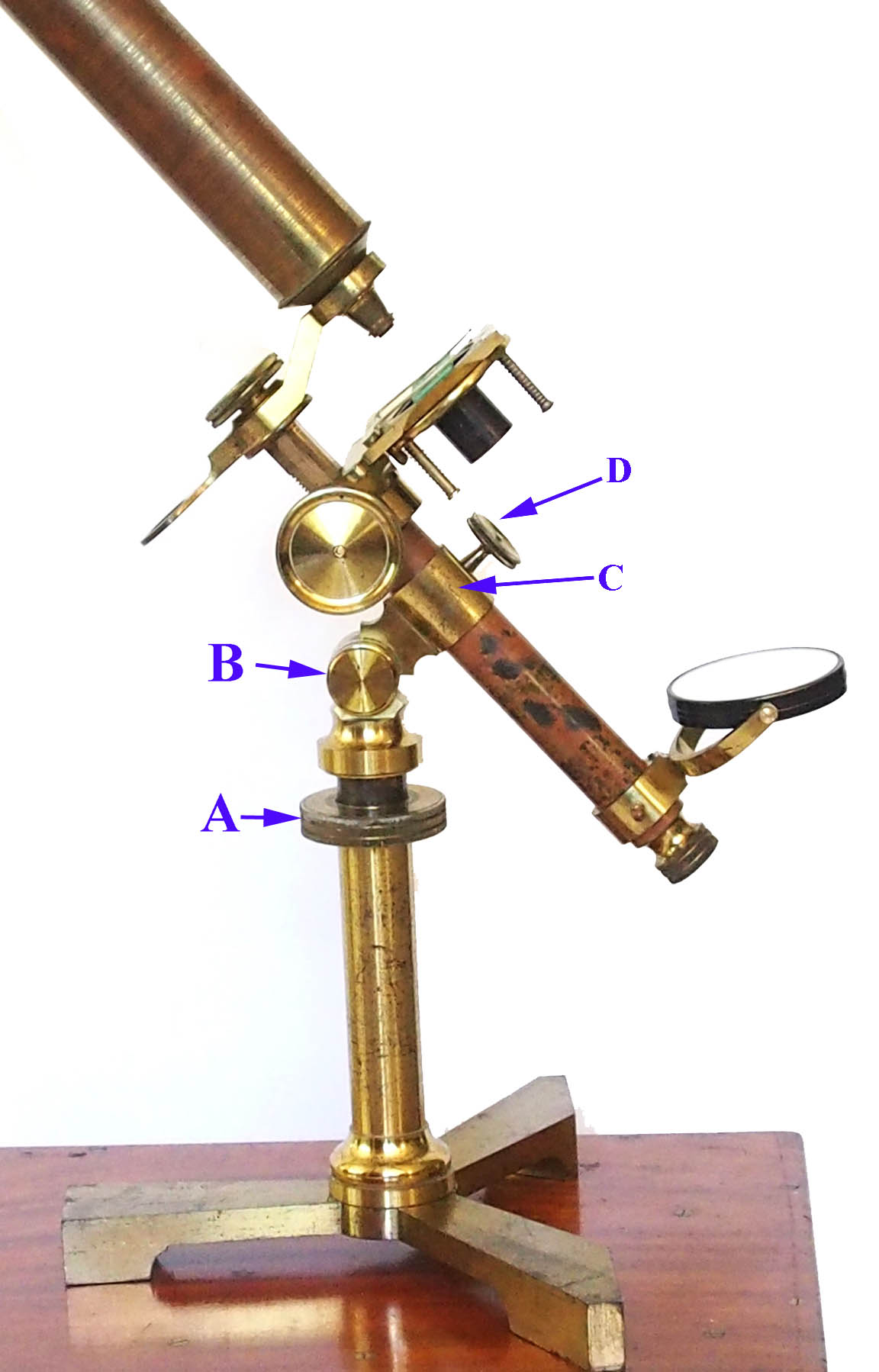
key(see below) and extends into a clamp(C) which encircles the tubular limb, allowing this to be positioned at different angles, and is itself tightened by a knurled knob(D).
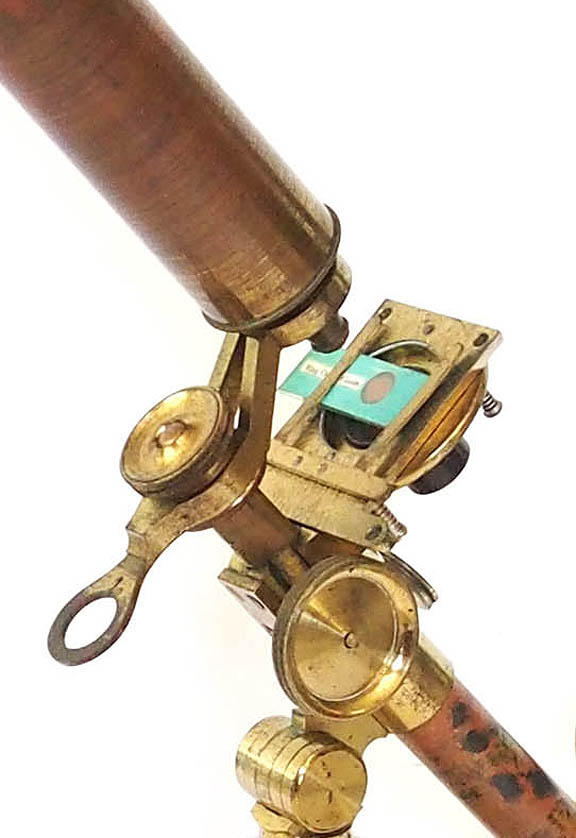
armwhich carries the 188 mm long body tube with an internal fitting diameter of 36.3 mm for the eyepieces. At the other end of the arm, there is a circular sprung clamp for the insertion of single lenses. The arm can be rotated and then fixed in a new position by loosening and tightening a circular knurled knob affixing it to the top of triangular bar. There is no draw tube or fine focusing arrangement on this particular example. The tubular limb extends into the tail-piece carrying a sleeve for the gimballed plano-concave mirror.
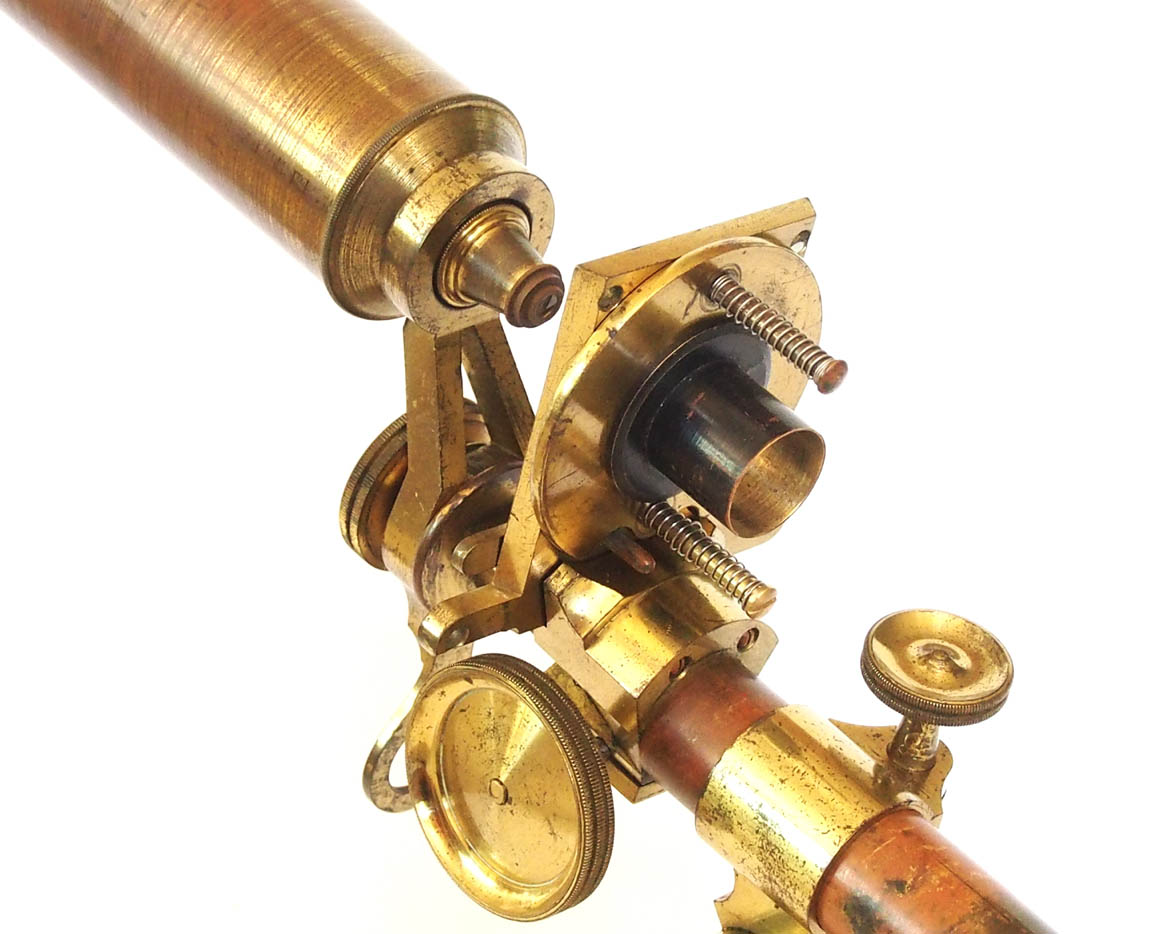
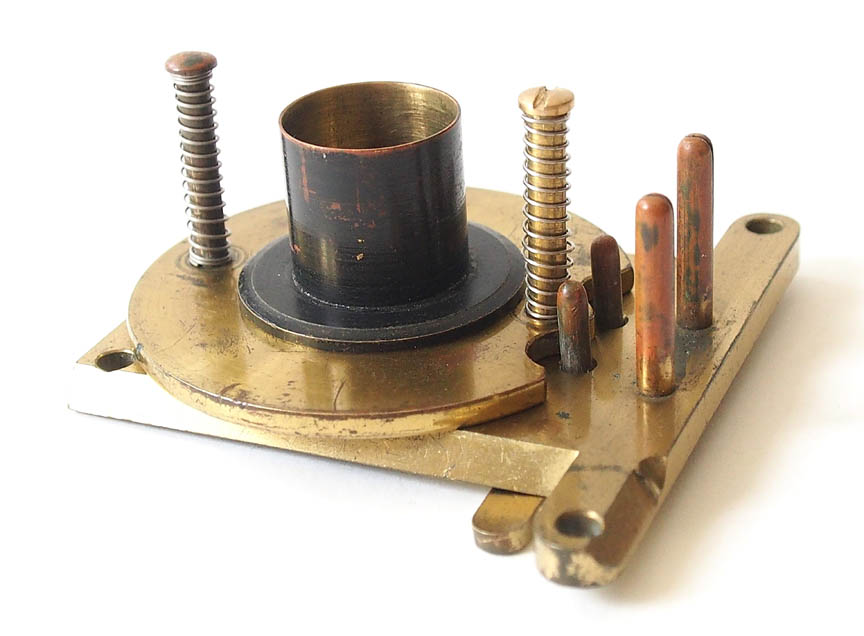
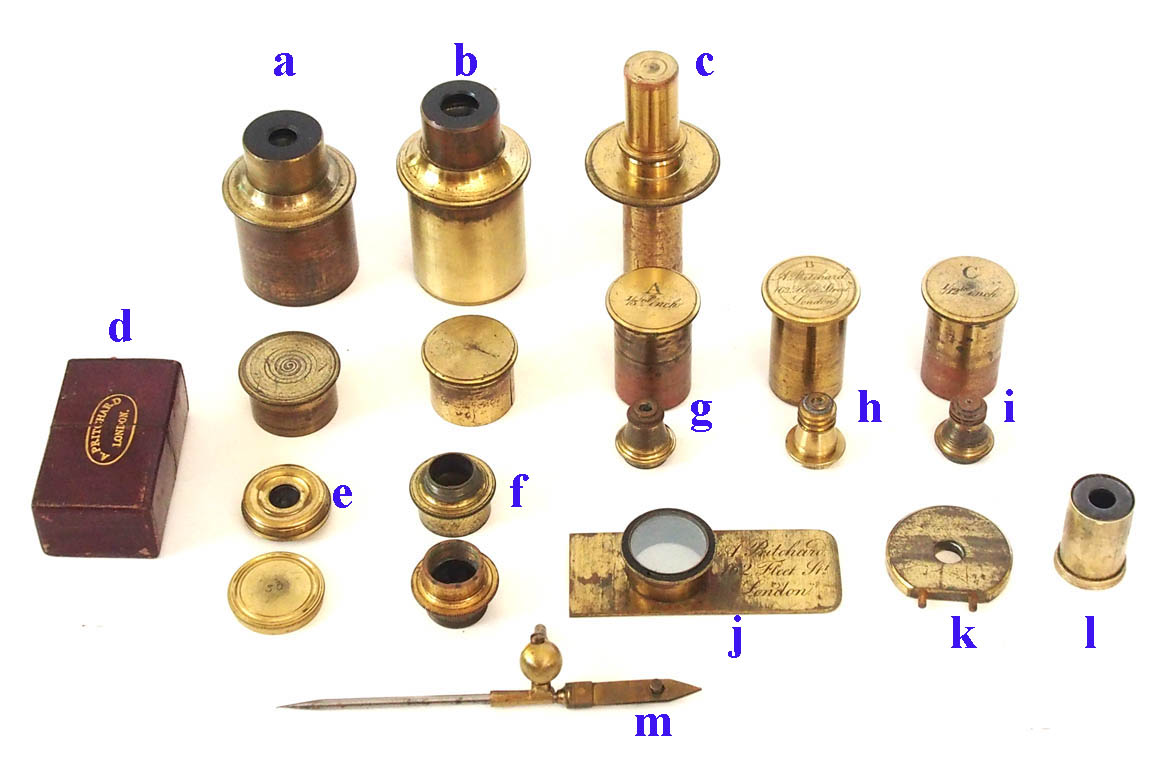
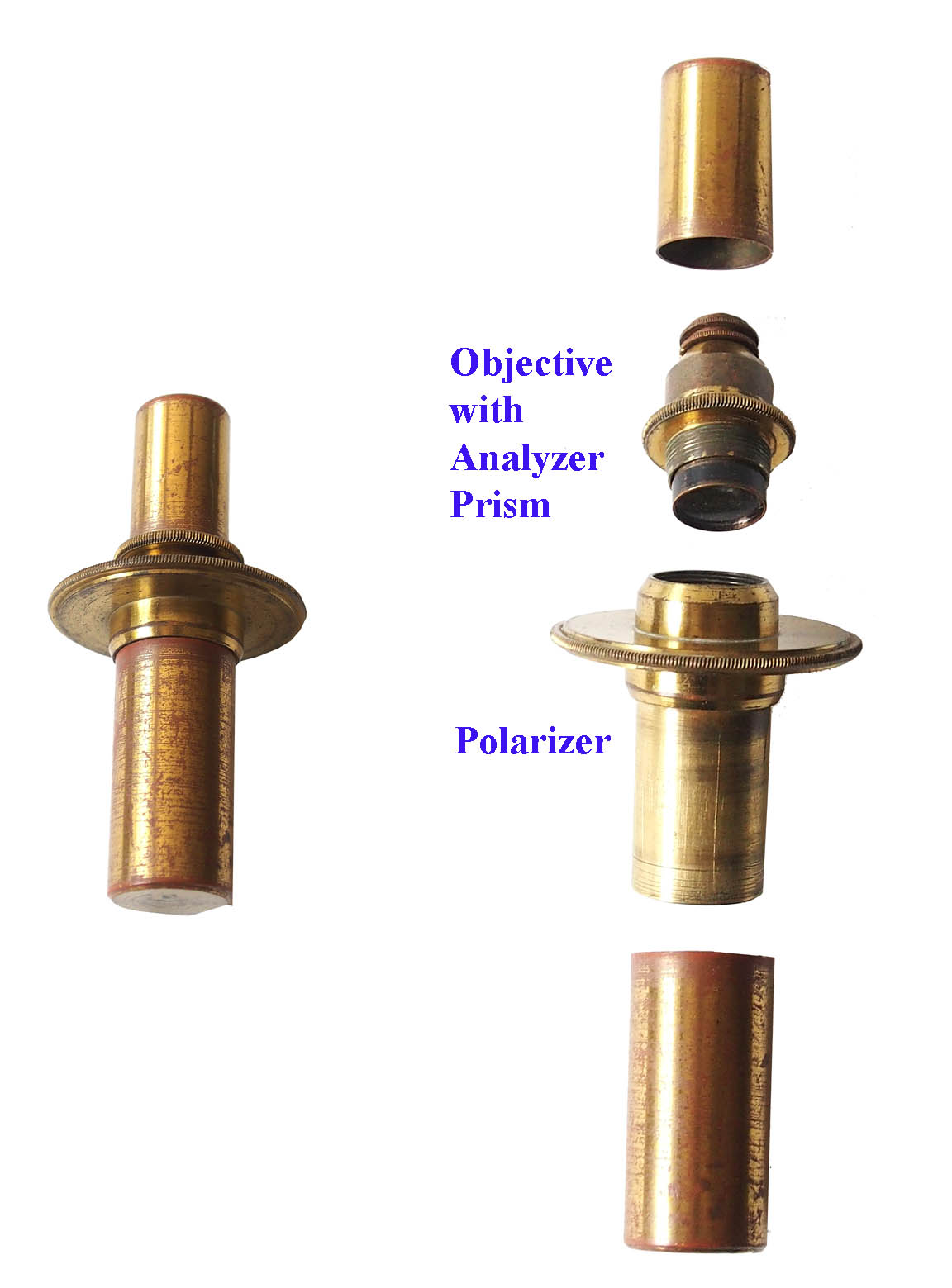
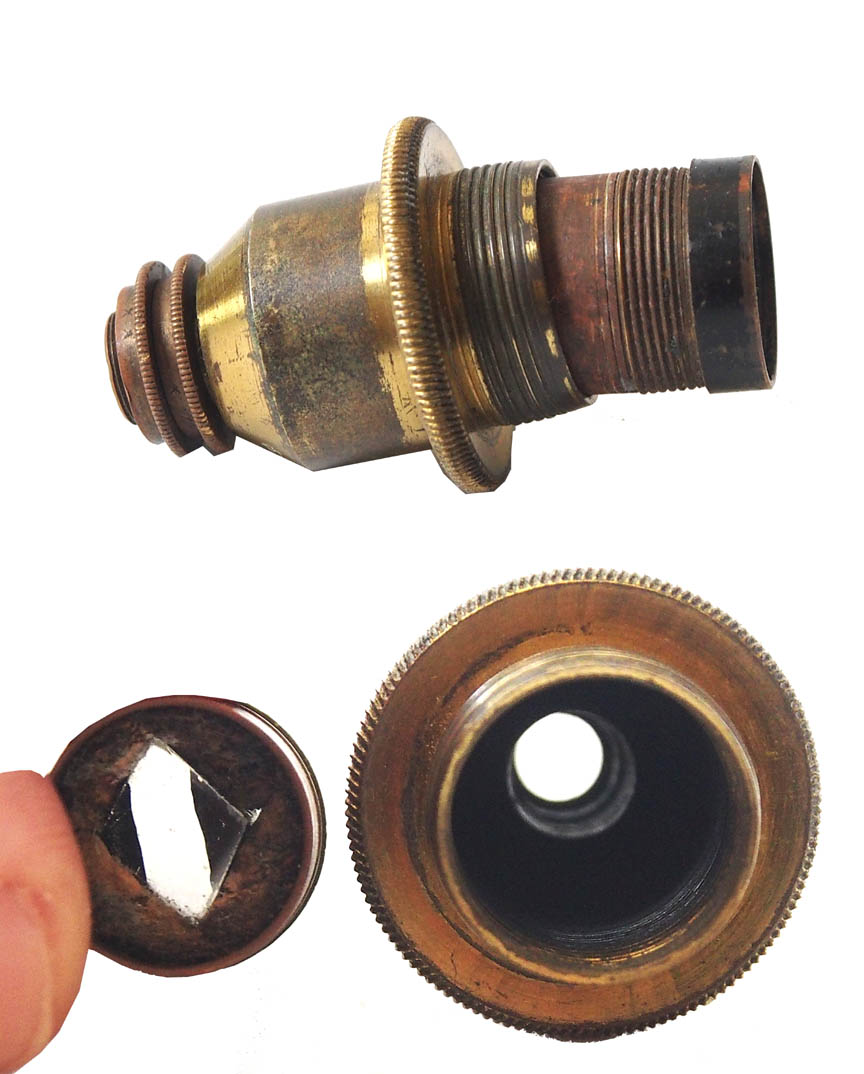
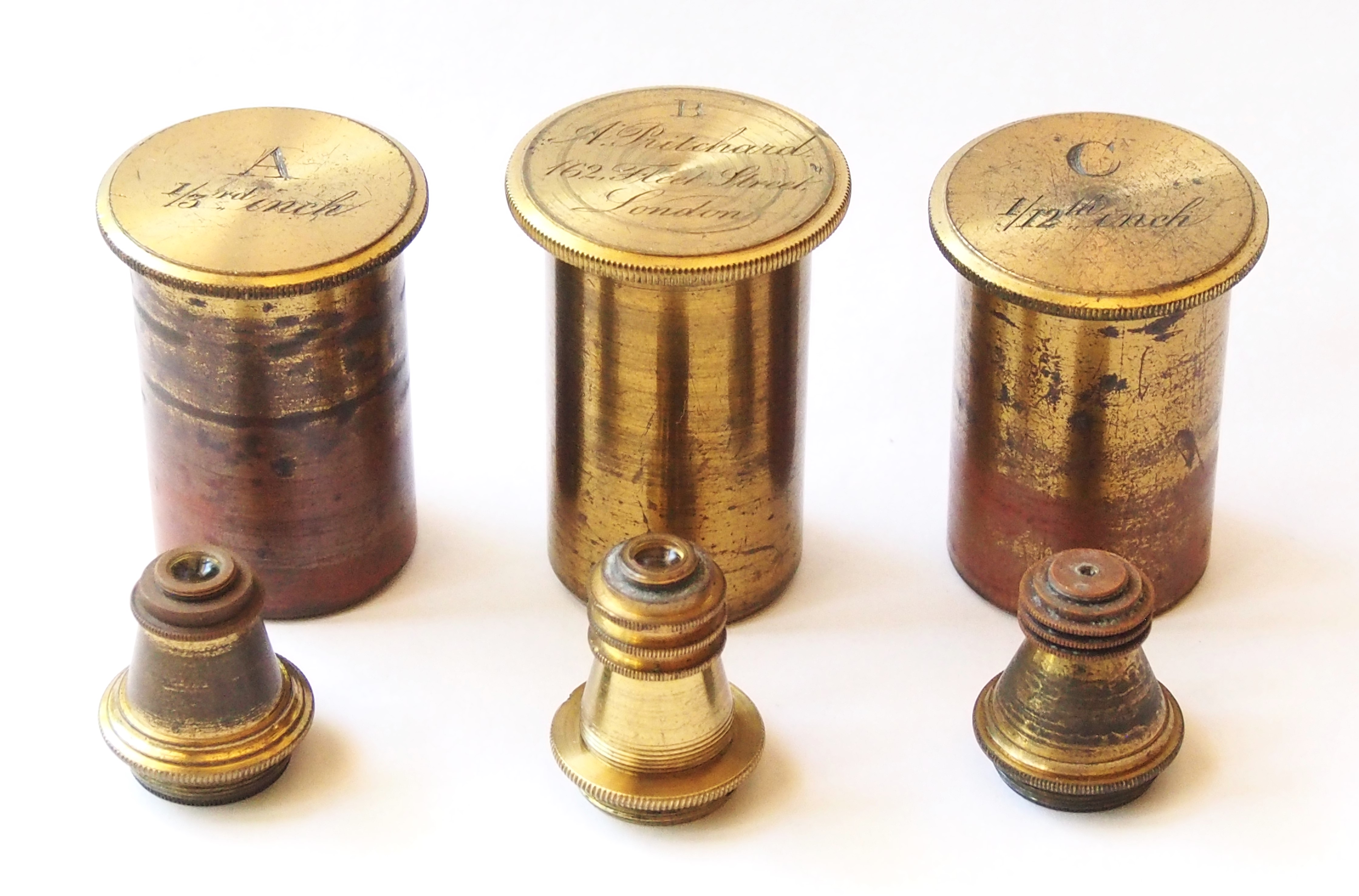 There are three Pritchard Objectives stored in original cans (g, h, and i above). These all have the pre-RMS Pritchard thread of 14.5 mm diameter, 36 tpi, and include a 1/3 inch, marked
There are three Pritchard Objectives stored in original cans (g, h, and i above). These all have the pre-RMS Pritchard thread of 14.5 mm diameter, 36 tpi, and include a 1/3 inch, marked A; 1/5 inch marked
B; 1/12 inch marked
C, and the polarizing objective containing a small Nicol prism and fitted with two French buttons. As noted above, the polarizing objective is stored with the polarizer. The objectives marked A,B, and C are stored in brass containers. The lowest magnification objective is stored in a can labeled
A, 1/3rdInch. The cap of the can for the mid-power objective is engraved
B, A. Pritchard, 162 Fleet street, London. The high power objective's can is engraved
C, 1/12th inch. The polarized light objective with built-in analyzer is a divisible objective.
| OBJECTIVE | APPROX. NA | APPROX MAG.WITH EYEPIECES | |
| 5X | 8X | ||
| A 1/3 IN. | 0.20 | 100 | 168 |
| B 1/5 IN. | 0.44 | 260 | 345 |
| C 1/12 IN. | 0.51 | 500 | 800 |
| POL 1 | 0.19 | 104 | 152 |
| POL 1+2 | 0.24 | 192 | 305 |

A. Pritchard, 162 Fleet Stt, London. A
*key(k above), to tighten the compass joint is also present.
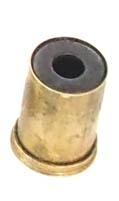
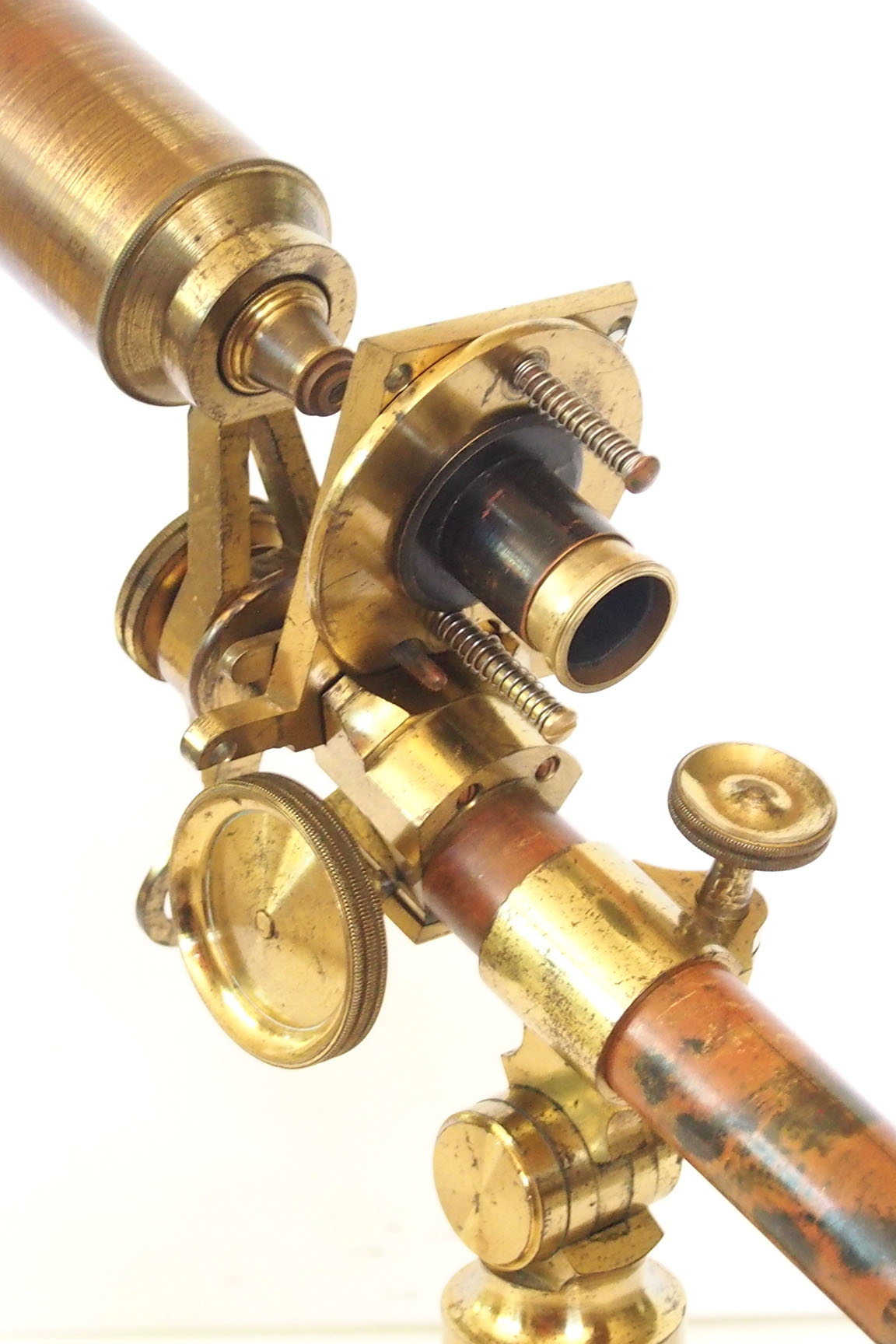
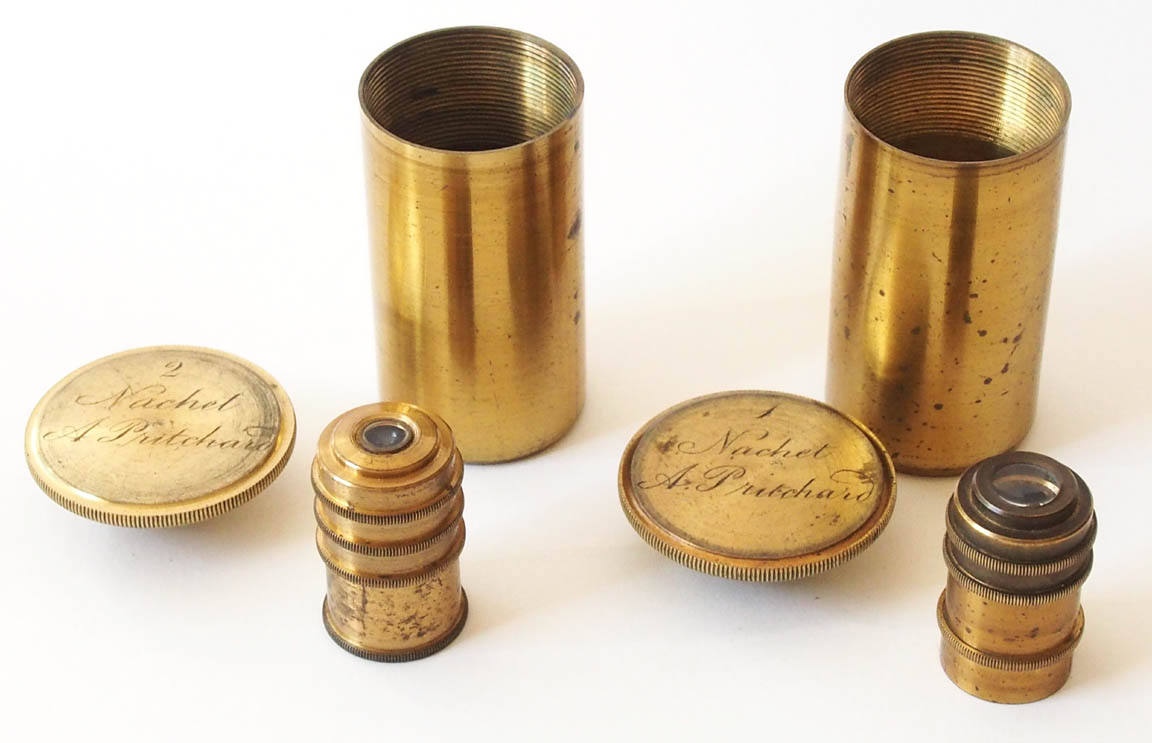
1 Nachet, A.Pritchardand
2, Nachet, A. Pritchard. These were obviously obtained from Camille Nachet in Paris and retailed by Pritchard for use with his own instruments. These carry the internal Nachet objective thread and require the use of an adapter.
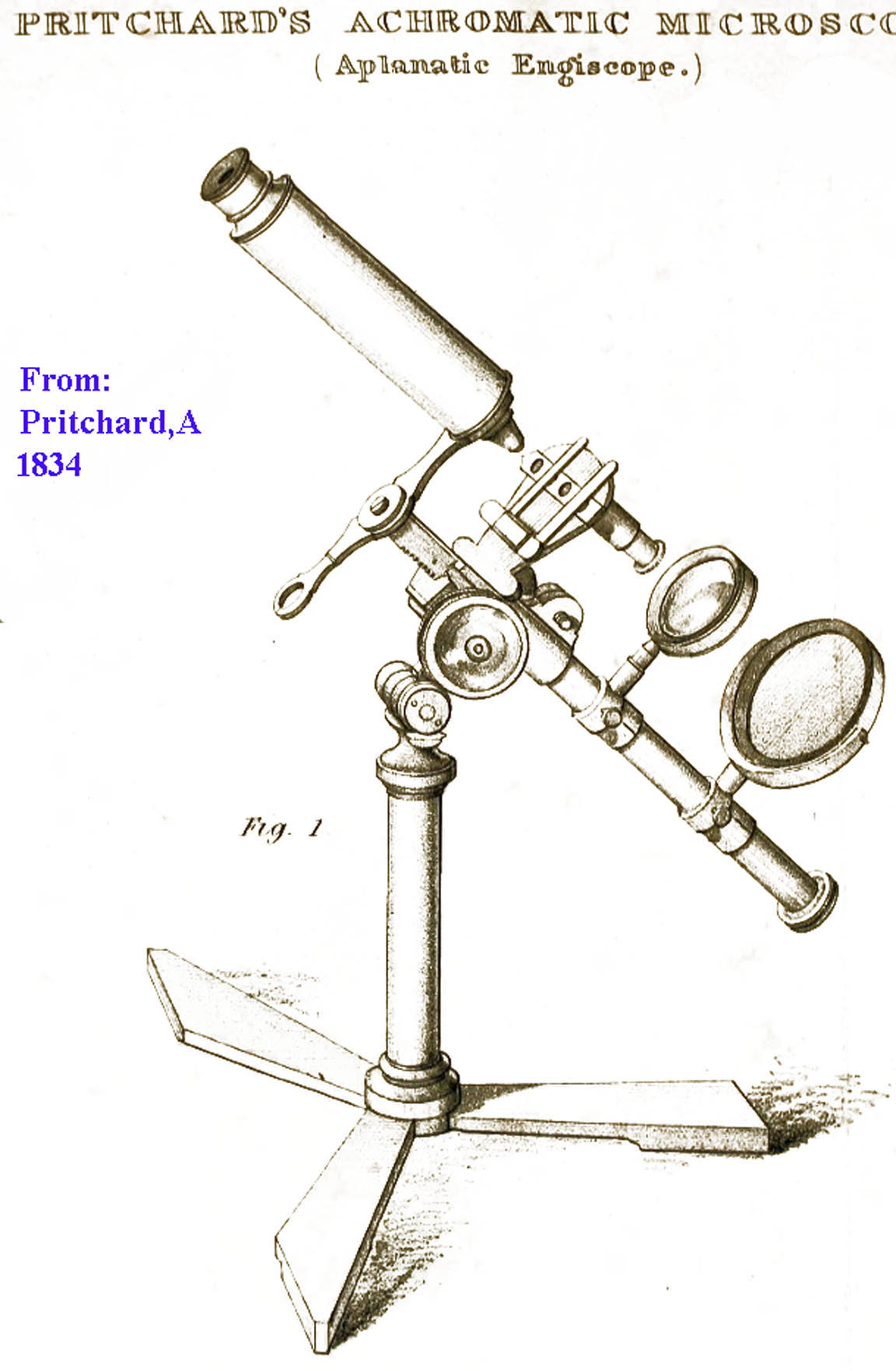 A first depiction(left) of what was to become the Pritchard Standard Achromatic microscope design can be found in his The Natural History of the Animalcules of 1834. The engraving shows the microscope in its original form featuring a pear-shaped stage with two pronged stage clips and a moveable condenser lens positioned half-way between the stage and the mirror. A number of examples of this model are extant signed with the 18 Pickett street (1827-1838)and 263 Strand (1835-1838) addresses.
A first depiction(left) of what was to become the Pritchard Standard Achromatic microscope design can be found in his The Natural History of the Animalcules of 1834. The engraving shows the microscope in its original form featuring a pear-shaped stage with two pronged stage clips and a moveable condenser lens positioned half-way between the stage and the mirror. A number of examples of this model are extant signed with the 18 Pickett street (1827-1838)and 263 Strand (1835-1838) addresses. Massivestyle thick stage , whereas Nos A 310, and A 312 (this example) have earlier types of stages. It is therefore tempting to speculate, that numbers with the prefix
Awere numbered retrospectively, and predate some of the later more massive models.
spanner wrench.